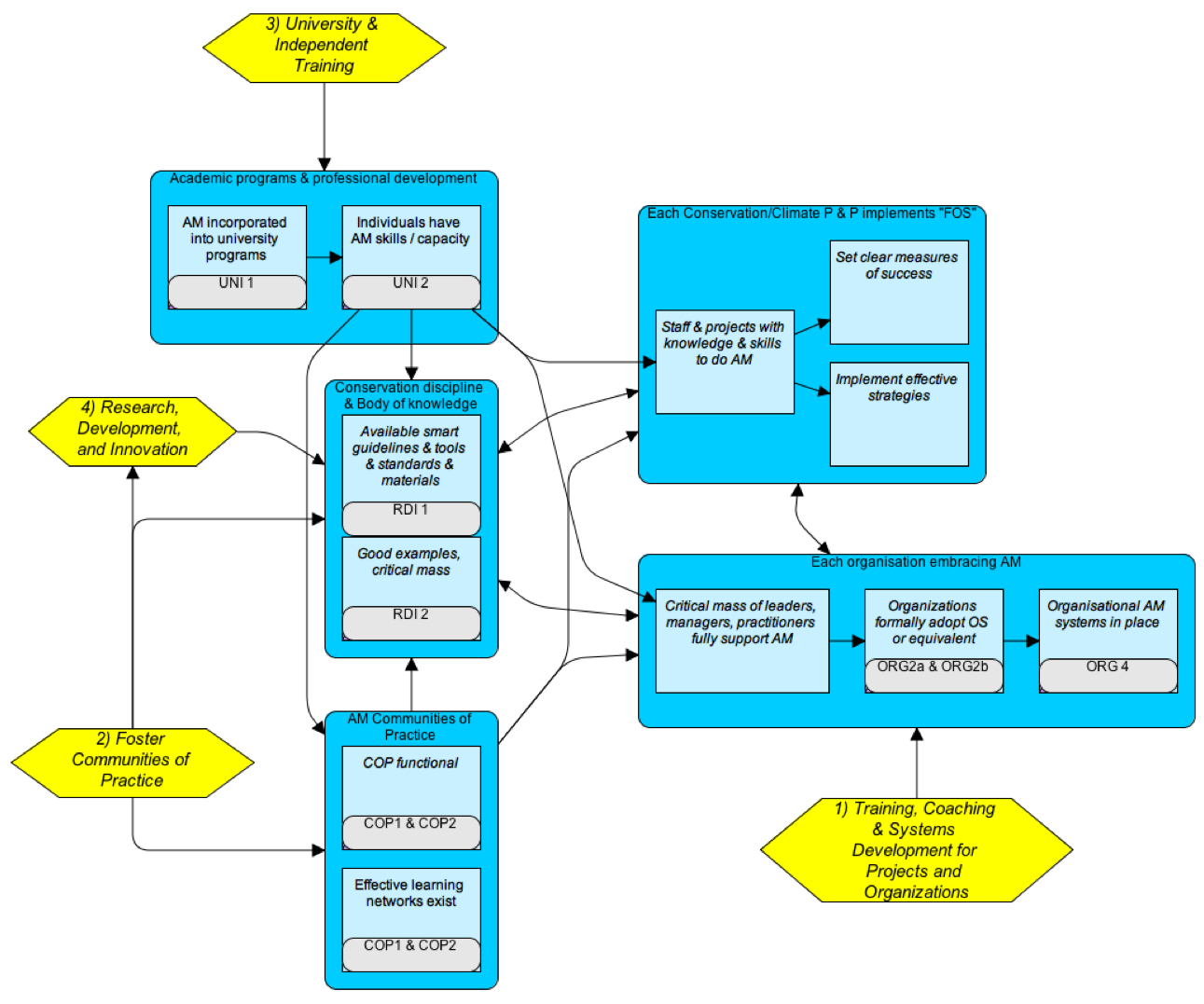For years, FOS has worked with conservation teams, stressing the importance of laying out their theories of change – how they expect theirconservation actions to lead to meaningful conservation change. Yet, for many of those years, we did not have our own explicit theory of change – we were not practicing what we preach.
In 2011, we realized we needed to change this! We made our implicit assumptions more explicit and developed a results chain to describe our main strategies, their intended impacts, and their interrelationships. We began monitoring indicators for each results chain annually via a scorecard that FOS staff filled out, based on our best understanding and often-incomplete knowledge of the longer-term effects of our work.
5 years later, in 2016, we hired an external evaluator to help us more accurately measure progress along our results chains, using primary data collected from our conservation partners. With the evaluator’s support, we struggled to better define our indicators and how we would measure them – we did exactly what our partners do when they are working on their conservation plans.
We gathered the data and learned a lot about where we were making progress and where we are not; where our theories of change held and where they did not; and where we cannot feasibly collect anything more than anecdotes and will have to accept some uncertainty. The process made us stronger as a team and, we hope, more effective.
Click here to learn more about this work. Thank you to all of you who provided your insights and to Kathleen Flower for her tireless work on this.

Results Chain Depicting Foundations of Success’s High-Level Theory of Change


Recent Comments